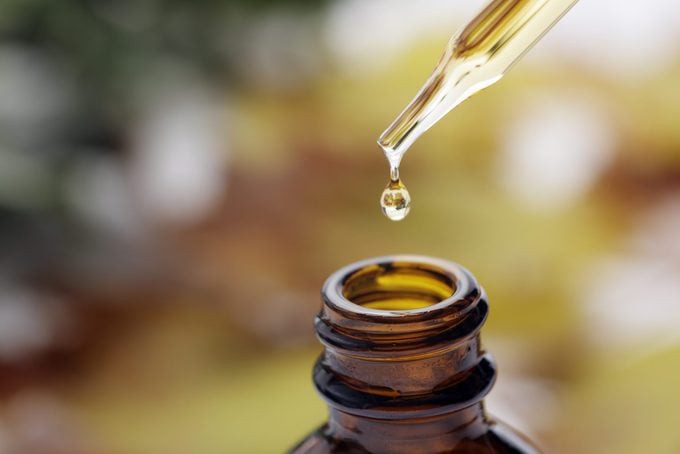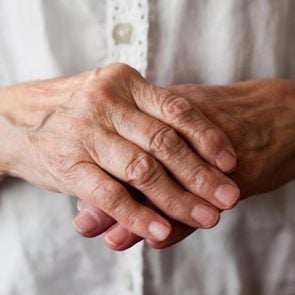26 Essential Oils That Might Be Helpful for People With Gout
Updated: Mar. 11, 2022
Before scientists developed conventional medications to treat gout, essential oils were often used to ease the intense pain of a gout attack. But can those oils be helpful today?
Why is gout so painful?
Gout, a type of inflammatory arthritis, often attacks with no warning and frequently at night. You may feel like a million bucks with no aches or pains as you lie down to sleep, but a few hours later, gout can wake you up with severe pain and swelling.
The source of the pain is the breakdown of uric acid, which forms microscopic, needle-like, painful crystals and can settle into any joint. But gout occurs mostly at the base of the big toe and the ankle.
People describe the pain as being stabbed with tiny, hot knives. Gout might strike at night because uric acid turns into painful crystals at a cooler temperature.
Whatever time gout strikes, it’s something you don’t want to experience twice. Here’s more about gout, its symptoms, how to treat it, and how essential oils might help.
What causes too much uric acid?
Everyone has uric acid in their body, but too much of it can be a risk factor for gout. Substances called purines are released when cells die, and purines are found in some foods.
When purines break down, they are eliminated as uric acid. The trouble comes when the body makes too much uric acid, or the kidneys may not get rid of enough uric acid.
Yet too much uric acid in the body doesn’t necessarily mean you’ll have gout. Some people are just more sensitive to purine-rich foods, namely red meats, certain seafood, sugary drinks, beer, wine, and liquor. There is also a genetic factor.
“Certain ethnicities are more at risk and those with immediate first-degree relatives in particular,” says Victoria Seligman, MD, MPH, a rheumatologist with UCHealth Cherry Creek-Rheumatology Clinic in Denver, Colorado. “People that have higher BMIs in the obese range are also at risk,”
A 2017 study published in Arthritis and Rheumatology points to being overweight as a risk factor for gout. The study showed people with higher BMIs were 85 percent more likely to have increased uric acid levels than people at a lower BMI.
Other risk factors for gout include:
- Age: It’s common for the first gout flare to occur between the ages of 30 and 50.
- Gender: Men are about five to 10 times more likely to get gout.
- Hormone levels: Postmenopausal women lose protection against rising uric acid levels as female sex hormones decrease.
- Diet: Regularly consuming high-purine foods and drinks increases your risk.
- Other conditions: Certain chronic health problems such as diabetes, heart disease, metabolic syndrome, and kidney disease increase your risk.
Symptoms of a gout flare
Gout is a chronic disease marked by attacks, also known as flares. Symptoms of a gout flare may include:
- Sudden onset of severe joint pain. Gout usually attacks one joint, but may affect other joints simultaneously.
- The skin at the affected joint may be so sensitive that even a light touch or blanket elicits extreme pain.
- Swelling in the affected joints.
- It may be difficult to move or put weight on the affected joint.
- Gout pain is typically the worst in the first 24 hours. Duration of the flare may be as little as a few days to a week or longer.
Treatment for gout
Medications such as oral steroids, steroid shots, colchicine, and NSAIDS are most effective when started early in the attack.
The best thing to do is realize that an attack is starting and seek care as soon as possible,” says Bernadette Siaton, MD, a rheumatologist who treats gout at the University of Maryland Medical Center and an assistant professor at the University of Maryland School of Medicine.
Your doctor may write you a prescription for anti-inflammatories to treat a flare and as a preventative to ward off future attacks.
People who can’t tolerate medication get corticosteroid pills or injections for pain relief.
Until the pain medications kick in, you can do a few things to tame the pain. If you can tolerate an ice pack on the affected joint, try icing it for about 10 minutes per session.
Keep the sore joint elevated, and try not to use it until the joint feels comfortable to move.
(You might want to try out these natural remedies for gout.)
Preventing gout flares
Depending on your medical history, your doctor may suggest medications to prevent inflammation and assist in lowering uric acid.
If your BMI is out of the healthy range, “a healthy diet that promotes weight loss can be beneficial to gout,” Dr. Seligman says.
Limiting high-purine foods and beverages that contribute to high uric acid levels can help, too.
What to expect from essential oils
Though essential oils have been used to treat myriad health conditions for centuries, it’s important to know they are rarely used as a stand-alone treatment.
Essential oils are generally more beneficial when supporting the other things you are doing to fend off gout flares—such as routinely taking medication to treat gout, managing other risk factors like diabetes and heart disease, and limiting purine-rich foods.
Essential oils are generally deemed safe, but it’s still wise to check with your doctor first. If you get the green light, consider contacting the National Association for Holistic Aromatherapy to find a certified aromatherapist.
Safest ways to use essential oils
Before buying essential oils, know they aren’t regulated by the U.S. Food and Drug Administration, so the quality can vary widely. Buy essential oils from a reputable company in good standing or ask for suggestions from a certified aromatherapist.
Some essential oils may be 100 percent pure, and others might be diluted with less expensive ingredients. Choose the 100 percent essential oil in its purest form with no fillers.
However, essential oils are highly concentrated and should never be used on the skin without diluting them first. Dilute essential oils with a carrier oil such as olive, coconut, or jojoba.
Never eat or drink essential oils unless you are working with a doctor or trained professional such as a certified aromatherapist. (Don’t miss these other tips if you’re a newbie to essential oils.)
Essential oils might cause headaches, trigger asthma, or other health issues for some.
Essential oils could do more harm than good if your skin becomes irritated or if you experience an allergic reaction.
Generally, people who have a history of sensitive skin when using topical products, or who have atopic dermatitis, are more prone to skin rashes and irritation.
The essential oils that tend to be more problematic for those people include oregano oil, cinnamon bark oil, jasmine oil, lemongrass oil, ylang-ylang oil, chamomile oil, and bergamot oil, according to Johns Hopkins Medicine. Do a patch test and place a few drops of diluted essential oil on your skin, and wait 24 hours.
If your skin becomes red, itchy, or swollen during the 24 hours, wash the area with soap and water and don’t use the essential oil. If your skin doesn’t get better and remains red, itchy, or has a rash or hives, see your doctor.
“Several essential oils are at risk for photosensitizing where it causes burning or skin pigmentation changes. Patients should avoid sunlight or tanning beds for up to 24 hours after applying to skin,” cautions Monika Nuffer, PharmD, clinical pharmacist with the UCHealth Center for Integrative Medicine, and a faculty member at the University of Colorado School of Medicine and Skaggs School of Pharmacy and Pharmaceutical Sciences.
Stay out of the sun or tanning beds if you are using angelica root (Angelica archangelica), bergamot (Citrus bergamia), cumin (Cuminum cyminum), grapefruit (Citrus paradise), expressed lemon (Citrus limon), expressed lime (Citrus aurantifolia), or bitter orange (Citrus aurantium).

Essential oils that might help
“Medications, diet, and weight loss are the cornerstone of gout, but essentials oils can be beneficial to manage symptoms of gout based on the therapeutic action of the chemical class,” says Nuffer.
It’s important to note that each essential oil has the potential to help a variety of symptoms.
According to Nuffer, the best essential oil combinations for gout have chemical properties that help with inflammation, decrease pain, and decrease uric acid levels.
“To determine the most appropriate three to five essential oil synergistic blend for a patient, we have to take into account what all the patient is taking to ensure it is safe in combination, [meets a] therapeutic goal, and [has a] pleasant smell, which is just as important, as we have many options for treatment.”
At the very least, the pleasant aromas may serve as a relaxing distraction from gout pain.
As tempting as it may be to create your own essential oil mix, the safest and most effective approach is to meet with an aromatherapist. He or she will develop a synergistic blend unique to your needs and goals to support gout.
Here are essential oils that may ease gout pain or assist in reducing uric acid.
Essential oils in the sesquiterpene chemical class
Nuffer says these essential oils can help decrease inflammation, and thus pain, in a gout patient:
- Clove bud (Syzygium aromaticum syn. Eugenia carophyllata)
- Copaiba (Copaifera species)
- Ginger distilled (Zingiber officinale)
- Helichrysum (Helichrysum italicum)
- Myrrh gum (Commiphora myrrha var. molmol)
- Patchouli (Pogostemon cablin)
- Vetiver (Vetiveria zizanioides)
- Yarrow (Achillea millefolium)
Essential oils in the monoterpene class
These essential oils are also helpful for inflammation, Nuffer says:
- Bergamot (Citrus bergamia): cold pressed or distilled
- Citronella, Ceylon (Cymbopogon nardus)
- Clary sage (Salvia sclarea)
- Coriander seed (Coriandrum sativum)
- Geranium (Pelargonium asperum)
- Lavender (Lavandula officinalis)
- Lavendin (Lavandula x intermedia)
- Melissa (Melissa officinalis)
- Neroli (Citrus aurantium var. amara flos.)
- Palmarosa (Cymbopogon martini)
- Petitgrain (Citrus aurantium var. amara – leaf)
- Rose (Rosa damascena) essential oil
- Thyme ct. geraniol (Thymus vulgaris)
- Ylang ylang #1 (Cananga odorata forma genuina)
“Essential oils that can help decrease the level of uric acid include lemongrass (Cymbopogon flexuosus), ginger (Zingiber officinale), turmeric (Curcuma longa), and thyme (Thymus vulgaris),” says Nuffer.
Work with an aromatherapist and your doctor for the best ways to use essential oils for your specific needs.



















